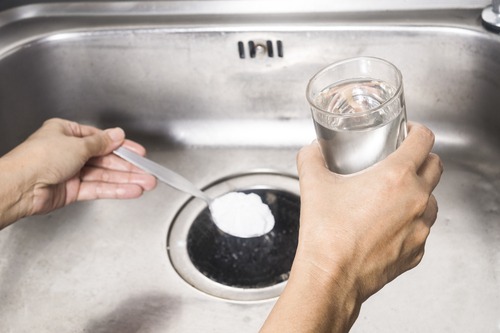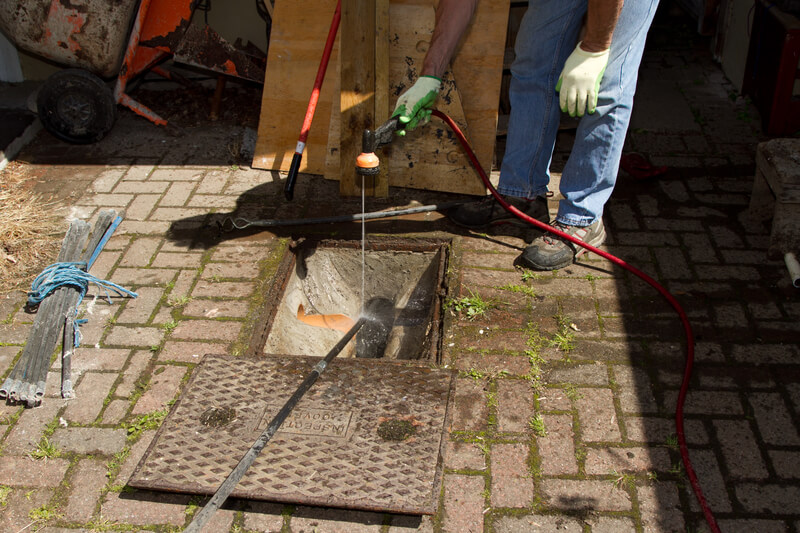We have stumbled upon this great article involving Tips for Dealing with Clogged Drains and Sewer Lines directly below on the web and think it made perfect sense to write about it with you on my blog.

Introduction
Dealing with an obstructed drain can be a frustrating experience, disrupting everyday activities and possibly triggering damage to your building. Nonetheless, before reaching out to plumbing experts, there are steps you can require to deal with the issue on your own. In this guide, we'll discover do it yourself options and preventive measures to tackle a blocked drain successfully.
Determining the Problem
The first step in dealing with a blocked drain is recognizing the signs. Slow water drainage, gurgling sounds, foul odors rising from drains pipes, or water backing up prevail indications of a blocked drainpipe. Determining these indicators early can assist avoid better issues.
Common Sources Of Blocked Drains
Recognizing the elements that add to drain pipes clogs is vital for reliable resolution. Common offenders include hair, soap scum, grease, food particles, and international things like sanitary items or paper towels. Tree origins attacking below ground pipes can likewise trigger considerable obstructions.
Do it yourself Solutions
For minor blockages, several DIY remedies can be effective. Putting boiling thin down the drain can assist liquify grease and debris. Sodium bicarbonate and vinegar or a mixture of salt and baking soda can function as all-natural cleansers. Utilizing a bettor or pipes serpent to dislodge blockages is another option.
Devices and Tools
Having the right tools accessible can make do it yourself drain cleansing a lot more efficient. A bettor is a versatile device for clearing obstructions in sinks, toilets, and showers. A plumbing serpent or auger can get to much deeper blockages, while drain cleansing chemicals can be made use of meticulously for persistent obstructions.
Safety nets
To prevent future blockages, taking on safety nets is vital. Set up drain guards or filters to catch hair and particles before they enter the pipes. Regularly flush drains pipes with hot water to dissolve oil build-up, and prevent disposing of oil or strong waste away.
When to Call a Specialist
While do it yourself solutions can solve small obstructions, specific signs show the demand for expert help. Persistent blockages, foul odors in spite of cleansing initiatives, or numerous drains pipes backing up all at once are warnings that warrant expert intervention.
Choosing the Right Plumbing Service
When choosing a plumbing solution, consider variables such as experience, licensing, and customer testimonials. Pick a reliable plumber with a track record of high quality handiwork and clear pricing practices.
Price Factors to consider
The cost of specialist drain cleaning services can differ depending upon the seriousness of the blockage and the plumbing's prices. Request quotes from several companies and ask about any surcharges to make certain transparency and stay clear of shocks.
Safety Precautions
When attempting do it yourself drain cleansing, prioritize safety. Use protective handwear covers and eyeglasses to prevent contact with harmful chemicals or microorganisms. Never ever mix different drainpipe cleaning products, as this can produce unsafe fumes.
Instance Studies
Real-life examples highlight the efficiency of DIY remedies and the importance of prompt professional treatment in solving drain clogs.
Verdict
By complying with the pointers detailed in this overview, you can successfully tackle obstructed drains and stop future plumbing problems. Whether going with DIY solutions or seeking specialist assistance, timely activity is vital to maintaining a healthy plumbing system and protecting the honesty of your home.
How to Clear a Clogged Drain Yourself (And When to Call In the Professionals)
What Can Clog a Drain
- Dirt
- Skin flakes
- Hair
- Grease
- Soap scum
- Food
- Offset pipes
- Tree roots
- Small objects
- Mineral buildup
DIY Tricks to Unclog a Drain
You can fix this! Once you have identified the source of the clog (or have a vague idea), you can try one or a combination of these fixes in order to clear your plumbing.
Wire Hanger or Snake
Untangle and clear out hair from a drainpipe with a homemade snake. Use a straightened-out wire hanger with a 90-degree angle hook to locate the clog and drag out any unwanted material.
Remember not to push the clog further down to where the wire hanger cannot reach! If you need to follow up with a plunger, give it a try. Your efforts might be more successful after it’s been wire-snaked.
If you want to get fancy and don’t have a wire hanger to spare, head to the store and pick up a hand-operated drain snake. You can get one for $10-$30. It may save you the hassle, and provide additional length to reach deep into the clogged pipe.
Plunger
A cup plunger has a suction cup attached to a wooden handle. The rubber creates a seal around the drain, and increases the pressure force of the plunger.
Plunge for 30-second increments to loosen the clog. This may need to be repeated over the course of 15-20 minutes. Once plunged, run the water to flush the remaining material out of the drain.
Remember– never use a plunger if you have used a chemical drain cleaner. These chemicals can splash up from the force of the plunger and cause serious injury or burns.
Boiling Water
Hot water can sometimes break up materials into a flushable amount. Dirt, grease, and soap buildup requires heat in order to unstick from surfaces.
Take your kitchen kettle and heat your water to a boil. Once it reaches a rolling boil, pour it directly down the drain into the blockage. Carefully follow with plunging, if necessary.
Don’t worry if this takes more than one try! It can often take multiple kettles and repeated plunging in order to clear a particularly stubborn clog.
Chemical Drain Cleaner
As a last resort, pick up a bottle of chemical drain cleaner. Drain-cleaning chemicals are potent, and not very good for the environment.
You may need to wear protective eyewear in gloves before handling your bottle of chemical drain cleaner. Follow the instructions printed on the bottle, and flush with water as soon as the instructions allow. Do not follow with plunging.
Baking Soda and Vinegar
As a safer alternative to chemical drain cleaner, baking soda and vinegar can create a chemical reaction that clears tough clogs.
Combine one cup of cleaning vinegar with one cup of boiling water, and set aside. Once you have done this, pour half a cup of baking soda down the drain. Give the baking thirty seconds to settle and cover a large portion of the problem drain.
Following the baking soda, pour down your vinegar and hot water solution. Once the vinegar and baking soda combine, the mixture will bubble and fix. Let this reaction fizzle in the drain for about an hour.
After an hour, follow with a kettle’s worth of hot water. The heat and liquid should flush out any remaining material.
When to Call a Plumber
If your DIY attempts haven’t cleared your clog drain, it’s time to call in a professional. It’s not worth losing access to your kitchen sink or high-traffic bathroom. A clog in a vital area can keep you from the things you’d rather be doing, and derail your routine.
Anytime a clog is causing water to spread is a time to call in a plumbing service. What starts out as a little bit of water can quickly grow into serious, expensive water damage.
Additionally, a serious clog can result in burst pipes or serious leaks. Make sure you know when to take it seriously!
https://myguysnow.com/how-to-clear-a-clogged-drain-yourself-and-when-to-call-in-the-professionals/

Hopefully you enjoyed our section about Tips for Dealing with Clogged Drains and Sewer Lines. Thanks for taking the time to read our piece of content. Do you know another person who is very much interested in the topic? Why not promote it. I take joy in reading our article about 8 Tips For Clearing A Blocked Drain.
This Resource
Comments on “Strategies for Fixing a Blocked Drain Before Consulting Plumbing Professionals”